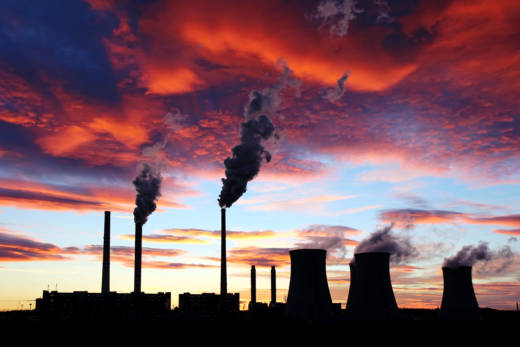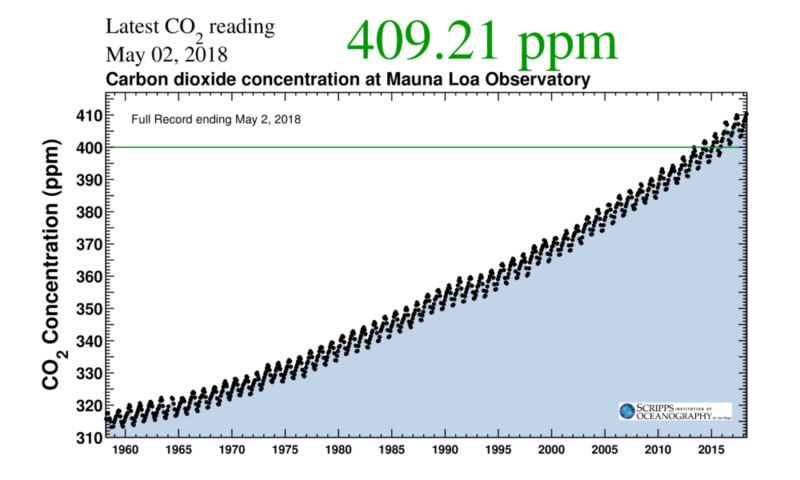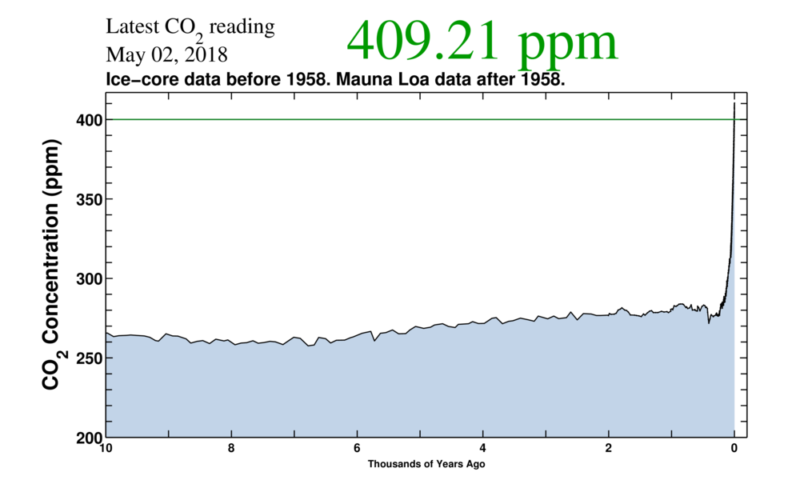For the first time in human history, the monthly average concentration of carbon dioxide in the atmosphere has surpassed the threshold of 410 parts per million.
That’s the finding of the Scripps CO2 Program, which tracks carbon dioxide measurements in the Earth’s atmosphere every 10 minutes. That data is then plotted onto the Keeling Curve, a graph that illustrates the rise in carbon dioxide levels.
The information is based on continuous measurements taken at the Mauna Loa Observatory in Hawaii. The latest threshold was registered in April.
The latest record shows that “humans are overwhelming nature” according to Ralph Keeling, a geophysicist and the head of the Scripps CO2 Program.
“It’s important to realize that we are headed towards pretty dangerous territory if we aren’t already in it,” says Keeling. “So something like 450-500 parts per billion places us in the danger zone. Things are changing already, so it’s become a question of how hard will it be to cope with all these changes.”


